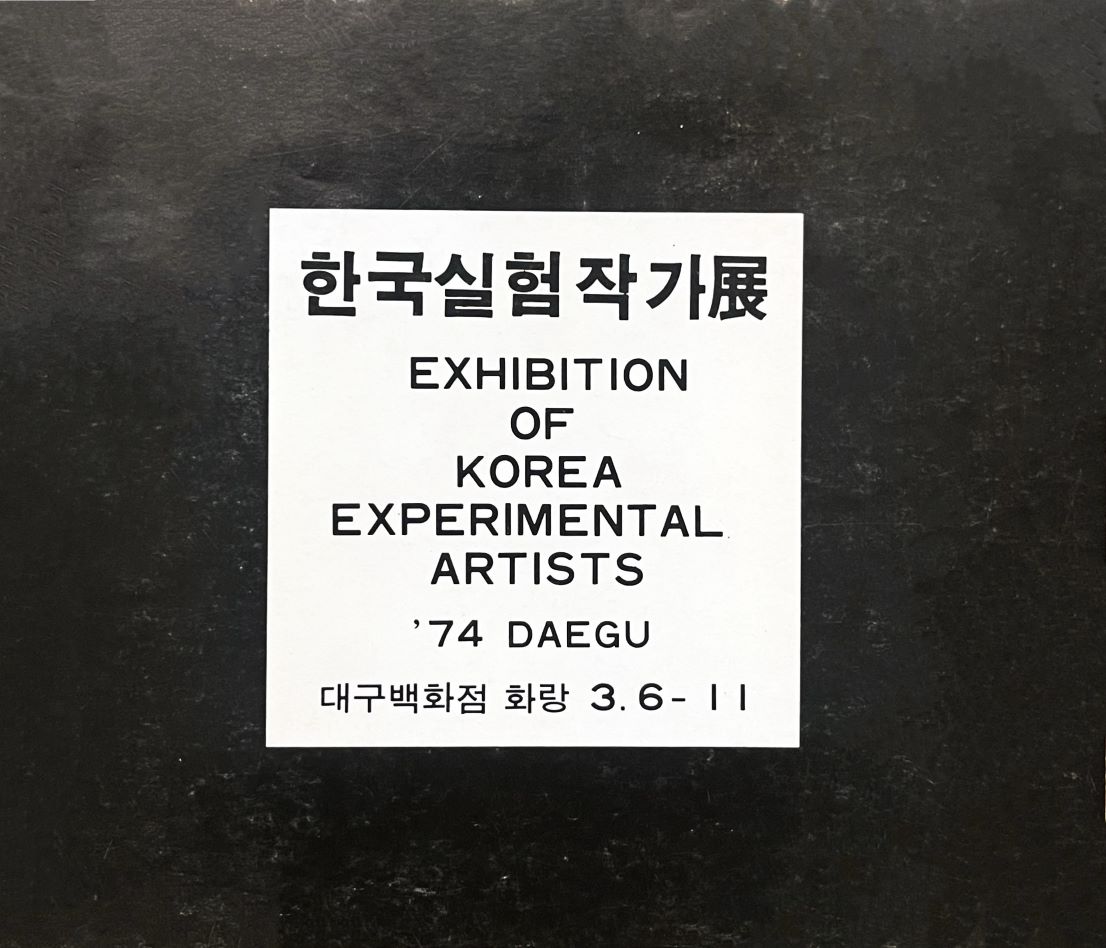
Korean Experimental Artists Exhibition Brochure, 1974, MMCA Art Research Center Collection
Korean Experimental Artists Exhibition
* Source: MMCA
Related
-
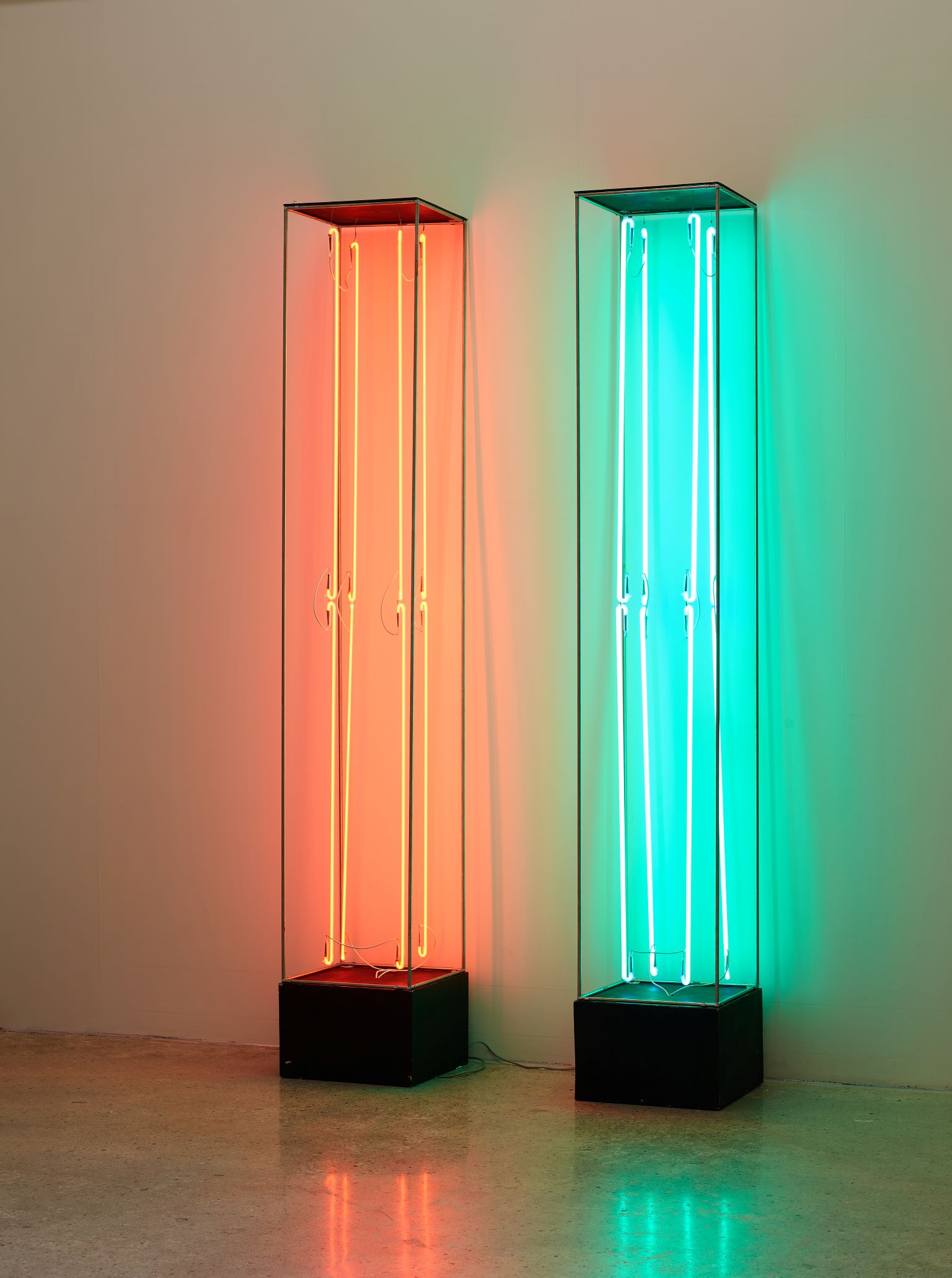
Experimental art
A genre of Korean art characterized by non-two-dimensional work such as sculpture, environmental installation and performance that emerged in the late 1960s and continued over the course of the 1970s. Art historian Kim Mikyung has analyzed the movement in the context of the political and social phenomena of the time and first coined the term experimental art to describe such work.
-
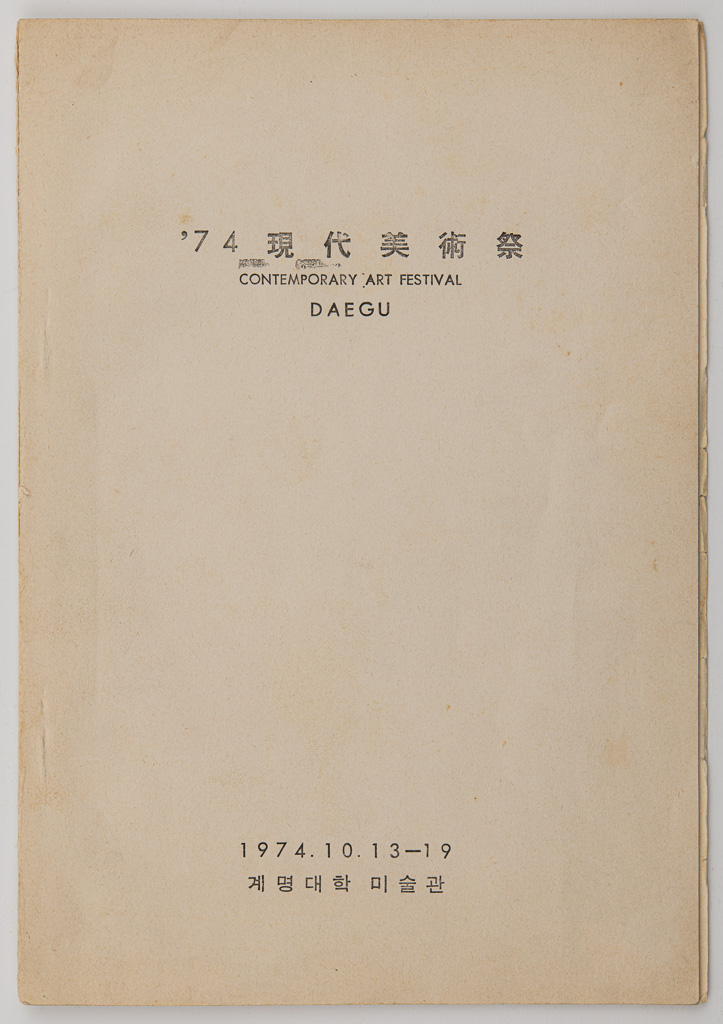
Daegu Contemporary Art Festival
The Daegu Contemporary Art Festival was an annual contemporary art festival held in Daegu between 1974 and 1979. Three-dimensional works and paintings were frequently presented in the festival. The first exhibition (1974) and second exhibitions were primarily held in indoor exhibition halls, but the third exhibition expanded its venue to include both indoor and outdoor spaces. This third exhibition was divided into two parts, a major component of which was Lee Kangso, Park Hyunki, Chong Jaekyoo, Lee Jongyoon, and Jang Jeongjin’s collective outdoors piece titled Event in Nature. In addition, the Korean Art Association board members, including Park Seobo and Ha Chonghyun, came to Daegu to moderate a panel discussion about contemporary art and the concerns of avant-garde artists for the third exhibition. In the fourth exhibition, a significant inclusion was the video works of Park Hyunki, Kim Deoknyun, and Kim Youngjin, while in the fifth and final iteration of the festival, Lee Kun-Yong reenacted his piece Logic of Place, initially staged at the AG Exhibition (1975). In the contemporary period, The Gangjeong Daegu Contemporary Art Festival (Gangjeong daegu hyundae misulje), incepted in 2012, has continued in its tradition.
-
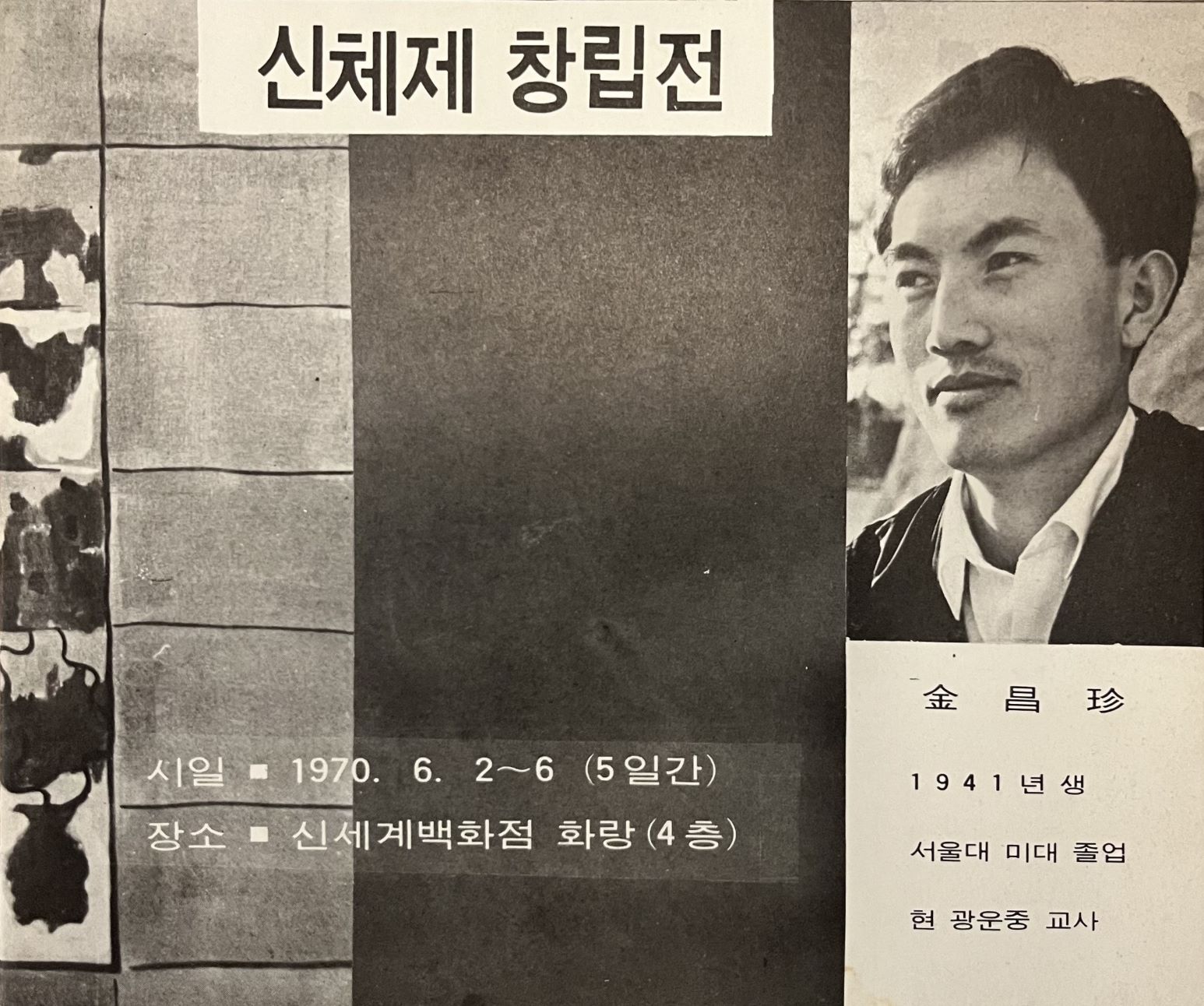
Sincheje
Sincheje is a group formed in 1970 by Western-style painters who graduated from the College of Fine Arts at Seoul National University. Its founding members were Kim Changjin, Yun Geoncheol, Lee Kangso, and Jeon Changun. They held an exhibition in celebration of the establishment of Sincheje at Shinsegae Gallery from June 2 through 6 in 1970. Sincheje was composed of young artists who pursued visual art concepts after abstraction, and most of them created works inclined toward geometric abstraction or Optical Art. Among the artists who joined Sincheje other than its founding members were Kang Hwajin, Kwun Suncheol, Kim Jungheun, Park Hakbae, Park Hangryul, Park Heeja, Park Sunam, An Boseon, Oh Sufan, Chong Jaekyoo, Jo Yonggak, Choi Sangchul, and Ha Dongchul. Due to the collapse of a common ideology and the departure of its members, Sincheje was dissolved with its eleventh exhibition held at the Korea Culture and Arts Foundation Art Center from July 10 through 16 in 1976 as the last exhibition. Sincheje is considered to have contributed to the opening of the art scene in the 1970s, along with the ST and Esprit, which were founded to establish contemporary art departing from the overheated Art Informel style of the 1960s.
Find More
-
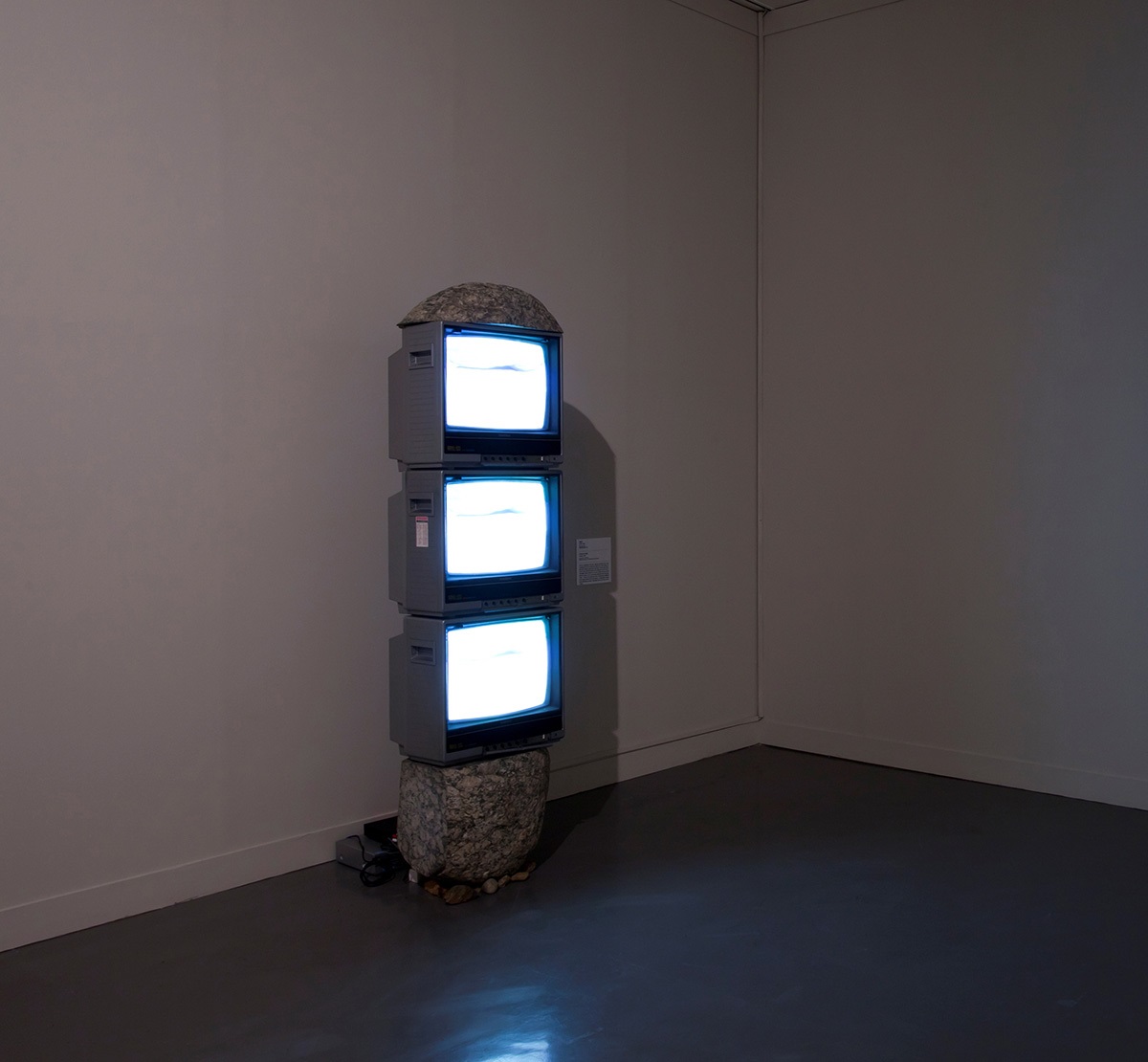
Park Hyunki
Park Hyunki (1942-2000) was a pioneering Korean video artist whose work focused on natural objects, such as water and stone, primarily using the medium of video. His oeuvre encompasses drawing, installation, performance art, and photography, among other genres. Born in Osaka, Japan, the artist returned to Daegu, his family’s hometown, in 1945 and settled in the city. He enrolled in the Department of Painting in the College of Fine Arts at Hongik University in 1961, but later changed his major to architecture. After graduation, he engaged both in the interior design business and artistic endeavors. Park has participated in the avant-garde art exhibition Daegu Contemporary Art Festival in Daegu since 1977. He was the first to experiment with video as a medium, thus significantly contributing to the development of Korean video art and the regional dissemination of experimental art. At the same time, he continued to join international exhibitions. The Water Tilting Performance featured at the Fifteenth São Paulo Biennale (1979) and Untitled (TV Stone Tower) submitted to the Eleventh Paris Biennale (1980) are the artist’s notable works that merge nature and media. In 1981, he also presented the performance project Pass through the City, in which he traversed the city center of Daegu with a giant stone to which a large mirror was attached on a trailer over sixteen meters long. From the 1990s onward and until his death, he continued his exploration of innovative mediums by working in photo-processing practice that he called “photo-media” and creating the installation The Mandala (1997), which composed geometric forms by assembling pornographic photos, and Presence and Reflection (1999), a video filming the movement of flowing water.
-
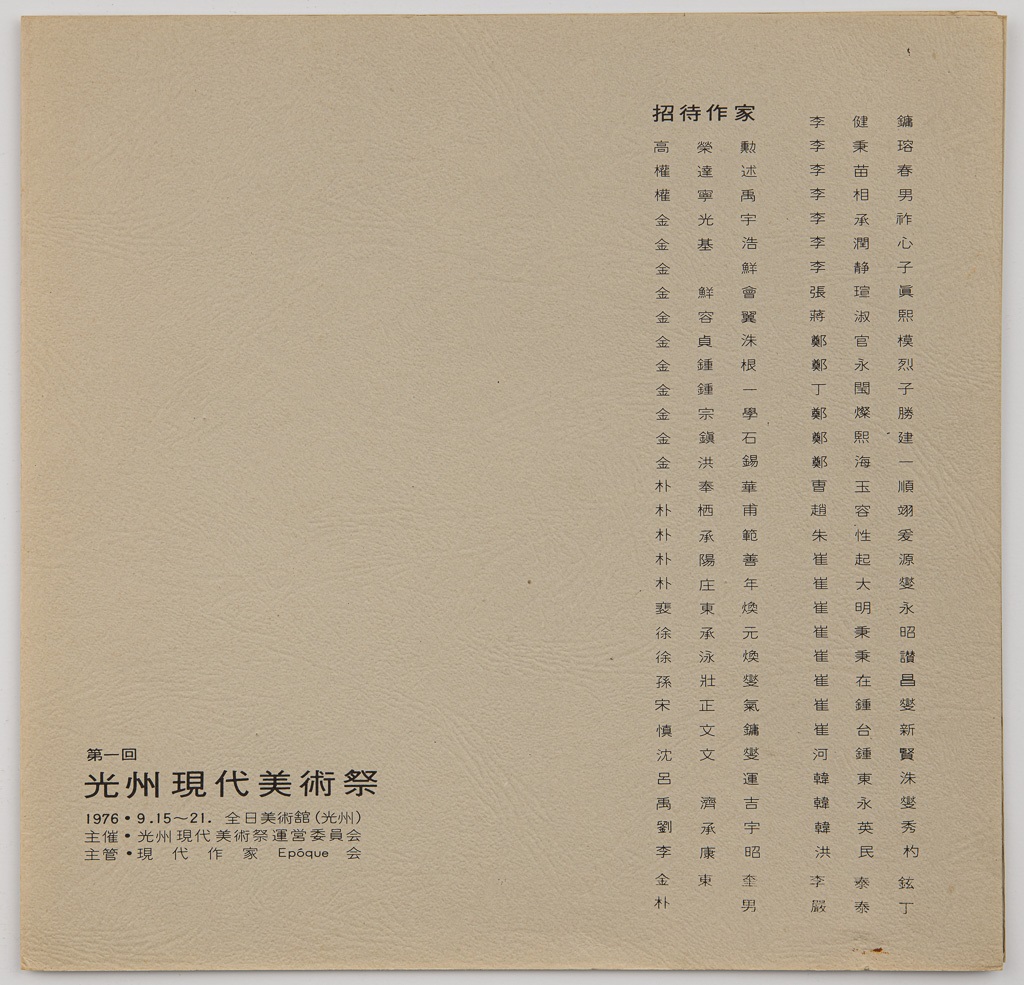
Gwangju Contemporary Art Festival
The Gwangju Contemporary Art Festival was a group exhibition held from 1976 until 1988 in Gwangju. In the mid-1970s, regional contemporary art festivals began to burgeon in Daegu, Busan, Gangwon, Gwangju, and other regions in opposition to the centralization of Korean art. In this context, the first Gwangju Contemporary Art Festival was hosted by the Epoque, an abstract art organization in Gwangju. The festival was held from September 15 through 21, 1976 at the Jeonil Museum of Art in Gwangju. At the festival, sixty-five artists presented mainly two-dimensional works. The second edition was held October 24 through 30, 1977 at the Jeonil Museum of Art, and 125 artists showcased paintings, sculptures, and prints. The third edition, comprised of both outdoor and indoor exhibitions, was organized under the theme of “nature + three-dimensionality.” It was staged as an outdoor exhibition on March 3, 1985, in the Gwangju National Museum grounds and as an indoor exhibition from March 17 through 30 at the Hyeonsan Museum of Art. A total of twenty-three artists participated in the third edition. Most of displayed works were experimental installations. In his essay “Transformation through New Experiments” in the catalogue, Chang Sukwon wrote that the participating artists would bring newness once again after the Epoque generation. In the fourth edition held from June 25 through 29, 1986 at Gwangju Namdo Art Hall in Gwangju, forty artists participated. The festival was dominated by two-dimensional abstract works. The fifth edition was held from February 8 through 13, 1988 at Gwangju Namdo Art Hall in Gwangju under the theme of the “On the Paper Wave,” and thirty-eight artists took part in it. The Gwangju Contemporary Art Festival discontinued afterward. However, it introduced Gwangju artists in the 1970s and 1980s. Its fresh attempts made in the third and fifth editions enriched local art history.






